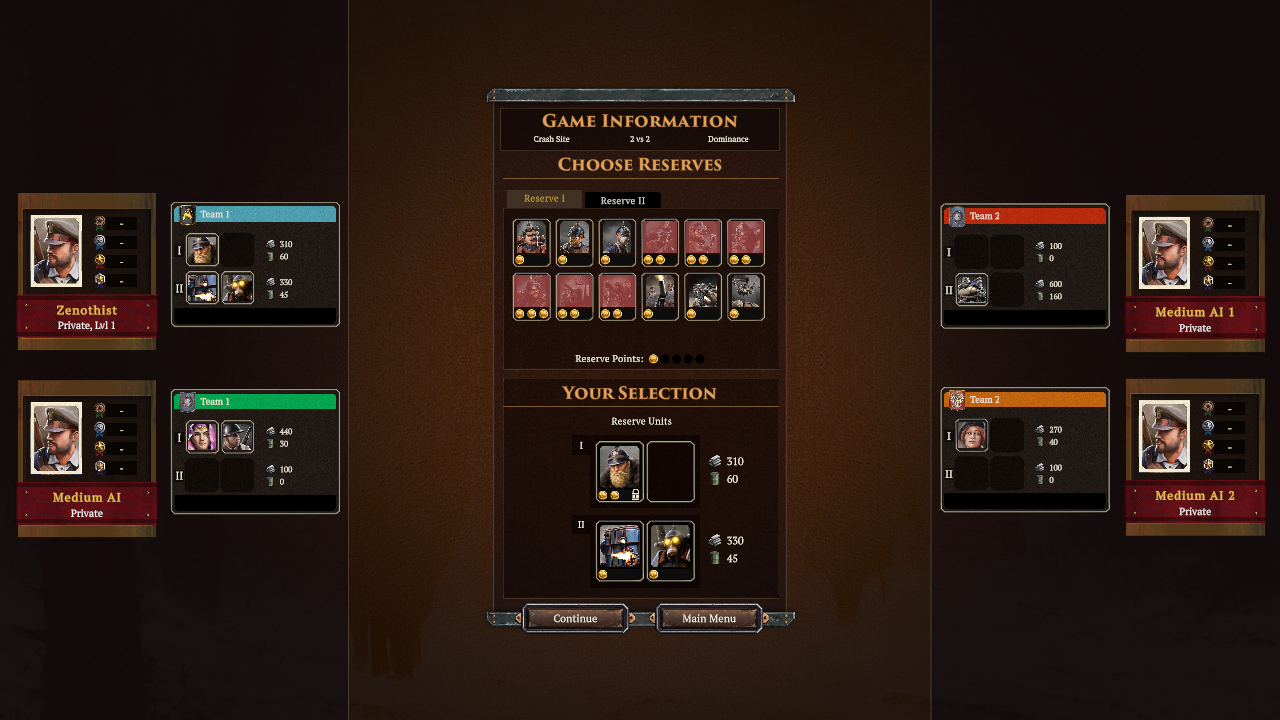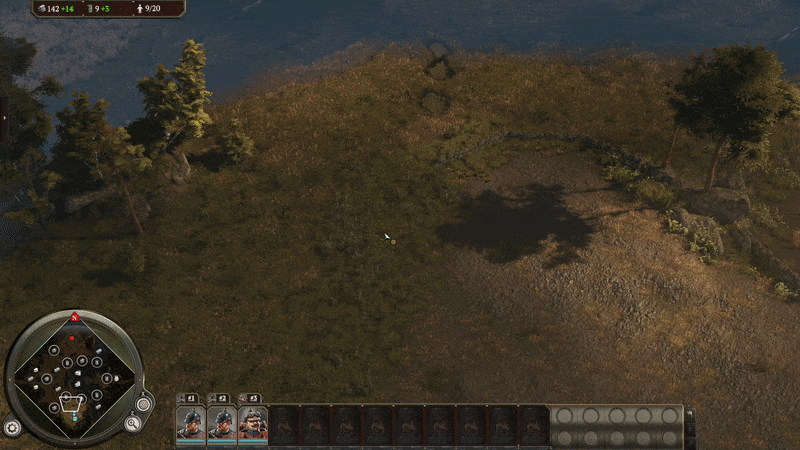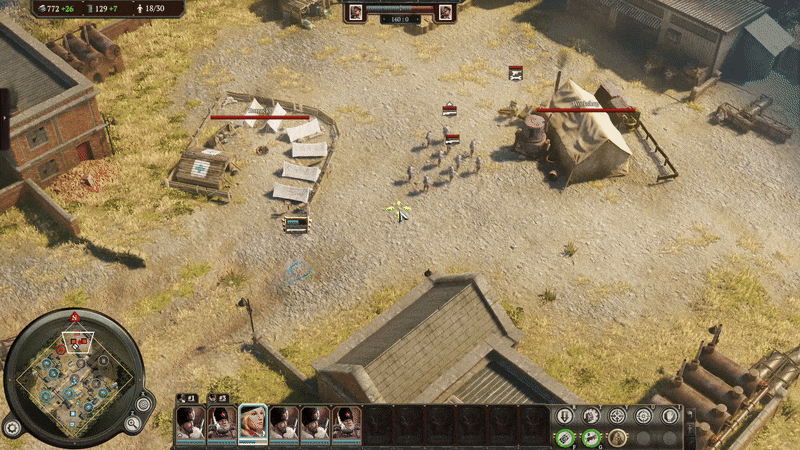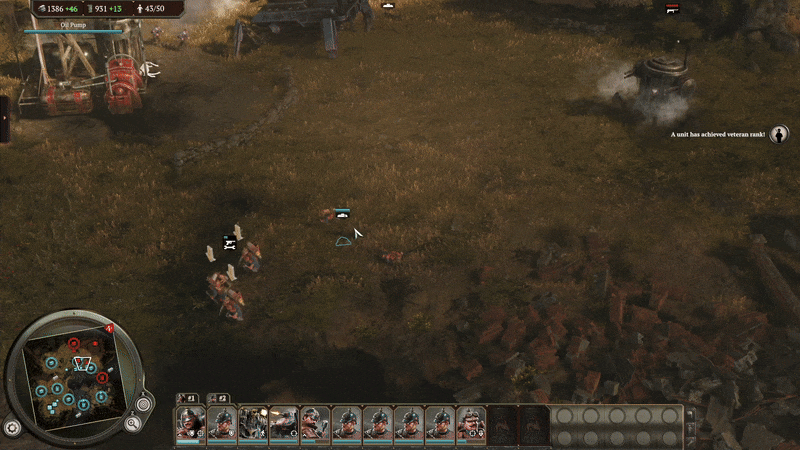
Iron Harvest
Summary
Iron Harvest is an award-winning real-time strategy game developed by KING Art Games, set in Jakub Różalski’s “World of 1920+” alternative universe where diesel-powered mechs dominate the landscapes and conflicts of Interwar-period Europe.
I worked on the project throughout production and post-launch, including its Kickstarter-exclusive DLC Iron Harvest: Rusviet Revolution.

Highlighted Contributions
Enemy AI
I collaborated with an AI programmer to define the behaviors and parameters of the AI system used for the skirmish game mode and several missions in the game’s campaign mode.
Over the course of development, I also iterated and balanced the weights and thresholds used by the AI system to create four clearly defined difficulty levels based on playtests and player feedback during the project’s closed and public beta phases.
During post-launch support, I made further balance adjustments and improvements to the enemy AI based on our internal development goals and community feedback.
Unit Stealth
During production, I researched, defined, and iterated on unit stealth.
The goal was to create a stealth feature that had interesting strengths and counter-play without new assets and minimizing the number of gameplay changes required for other units.
Unit stealth broadly works as follows:
Units in stealth are invisible to opponents on the (mini)map.
Units exit stealth when attacking, retreating, capturing, or if any enemy unit comes within a predefined range of them.
Units re-enter stealth after they have not attacked or taken damage for a duration.
Reserve Phase
During production, the team sought to introduce a layer of interesting decision making for players in addition to faction selection, as well as a way to produce powerful hero units during a match.
I co-conceptualized a phase that occurs before a match begins: Players select a hero and a limited number of units for one of two reserves they can deploy during a match after meeting certain tech tree conditions.
All players have their faction and hero revealed before picking their units, aiding them in anticipating and counteracting their opponents. Once the phase ends, all units in each player’s reserves are revealed.
I also created and balanced a number of preset reserves from which the AI for each faction could choose to create more nuanced challenges for players.
Anti-Armor Mines
I conceptualized the mechanics of the anti-armor mines: invisible stationary units that trigger when specific enemy types are nearby, moving towards their target and exploding on impact.
The goal was to create a simple, but familiar feature for genre enthusiasts with a twist befitting the title’s setting that enabled counter-play before and after the mine is triggered.
Multiplayer Ping
To facilitate non-verbal communication between players in multiplayer, I researched, conceptualized, and iterated on a ping feature as part of a post-launch update, working together with a UI/UX designer on the visuals.
Players can use pings to convey different information to help coordinate with their allies:
Attack this location.
Defend this location.
Retreat from this location.
I am sending units to this location.
Pay attention to this location.
Native Mode
I conceptualized and pitched an optional setting where all characters and units spoke in their native language.
Due to Iron Harvest’s setting, there was an opportunity for a feature that appealed to our audience segments interested in history or fictional representations of their home country.
As the game was intended to launch with Polish, Russian, and German voice-overs, we were able to make this mode possible with existing assets.






